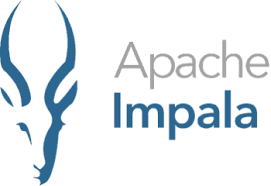A recent research study delved into the cost advantage offered by AWS Spot Instances in terms of an organization’s overall cloud spending. By analyzing the preemption rates of t3/t4 Spot Instances within the research group, the data revealed a notable surge in demand for spot instances as a whole. By Aditya Kulkarni A recent research study delved into the cost advantage offered by AWS Spot Instances in terms of an organization’s overall cloud spending. By analyzing the preemption rates of t3/t4 Spot Instances within the research group, the data revealed a notable surge in demand for spot instances as a whole. By Aditya KulkarniRead More
Article: Exploring Java Records Beyond Data Transfer Objects
Records are a concise and easy-to-use syntax for creating immutable classes. By using Records, you can ensure that your APIs are bulletproof and less prone to errors. Additionally, Records can be applied with Domain-Driven Design (DDD) principles to create more robust and maintainable code. Learning to use Records and apply them with DDD can help you make more resilient and scalable applications. By Otavio Santana Records are a concise and easy-to-use syntax for creating immutable classes. By using Records, you can ensure that your APIs are bulletproof and less prone to errors. Additionally, Records can be applied with Domain-Driven Design (DDD) principles to create more robust and maintainable code. Learning to use Records and apply them with DDD can help you make more resilient and scalable applications. By Otavio SantanaRead More
Article: Exploring Java Records Beyond Data Transfer Objects
Records are a concise and easy-to-use syntax for creating immutable classes. By using Records, you can ensure that your APIs are bulletproof and less prone to errors. Additionally, Records can be applied with Domain-Driven Design (DDD) principles to create more robust and maintainable code. Learning to use Records and apply them with DDD can help you make more resilient and scalable applications. By Otavio Santana Records are a concise and easy-to-use syntax for creating immutable classes. By using Records, you can ensure that your APIs are bulletproof and less prone to errors. Additionally, Records can be applied with Domain-Driven Design (DDD) principles to create more robust and maintainable code. Learning to use Records and apply them with DDD can help you make more resilient and scalable applications. By Otavio SantanaRead More
ASP.NET Core in .NET 8 Preview 5: Improved Debugging, Blazor Updates, SignalR Reconnects, and More
.NET 8 Preview 5 brings significant additions to ASP.NET Core. Notable enhancements include an improved debugging experience for ASP.NET Core, changes regarding the servers and middleware, the introduction of new features and improvements in Blazor, enhanced API authoring capabilities, seamless reconnect functionality in SignalR, and improvements and changes in authentication and authorization. By Almir Vuk .NET 8 Preview 5 brings significant additions to ASP.NET Core. Notable enhancements include an improved debugging experience for ASP.NET Core, changes regarding the servers and middleware, the introduction of new features and improvements in Blazor, enhanced API authoring capabilities, seamless reconnect functionality in SignalR, and improvements and changes in authentication and authorization. By Almir VukRead More
Canonical Sunbeam Aims to Simplify Migrating from Small-Scale Legacy IT Solutions to OpenStack
Canonical has announced a new open-source project to enable organizations to transition their small-scale proprietary IT solutions to OpenStack. Named Sunbeam, the project is free of charge and does not require an expensive professional services engagement, says Canonical By Sergio De Simone Canonical has announced a new open-source project to enable organizations to transition their small-scale proprietary IT solutions to OpenStack. Named Sunbeam, the project is free of charge and does not require an expensive professional services engagement, says Canonical By Sergio De SimoneRead More


